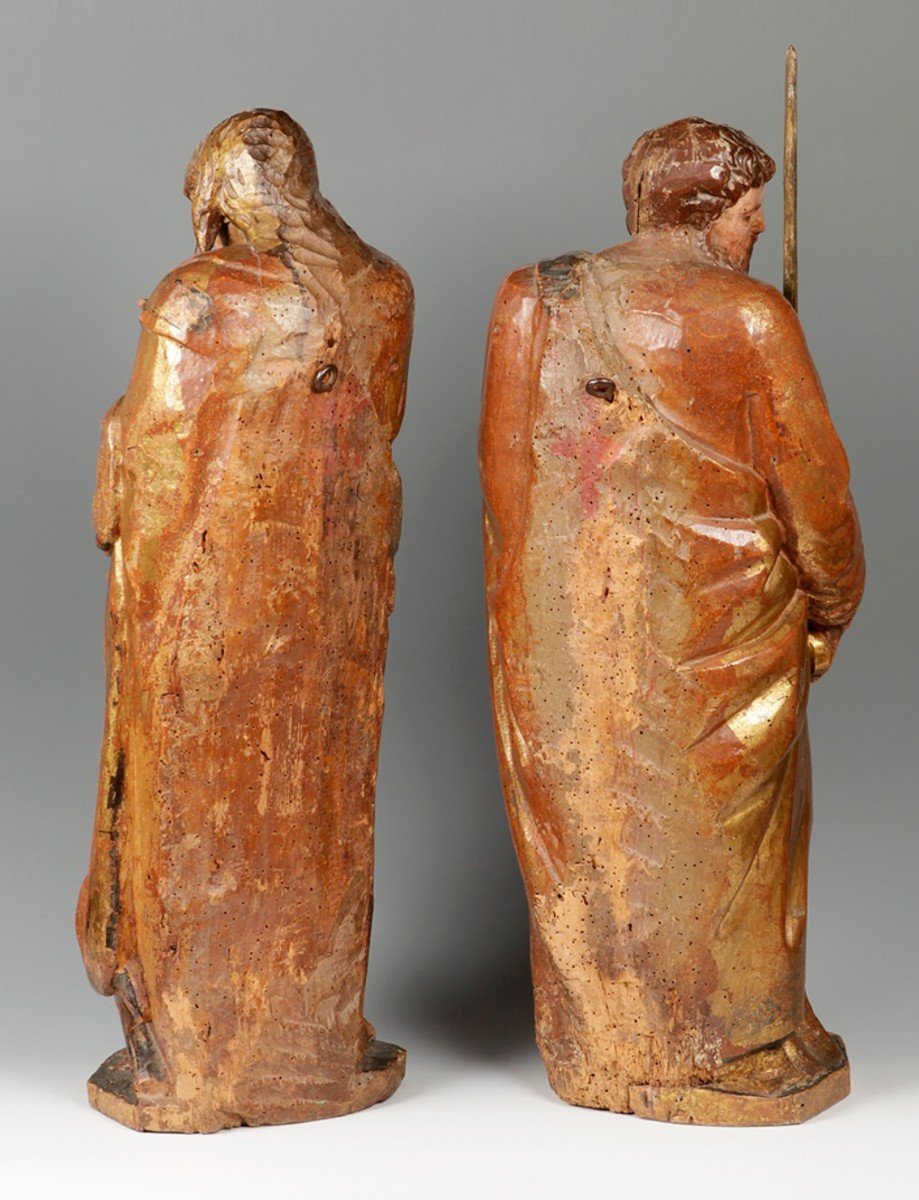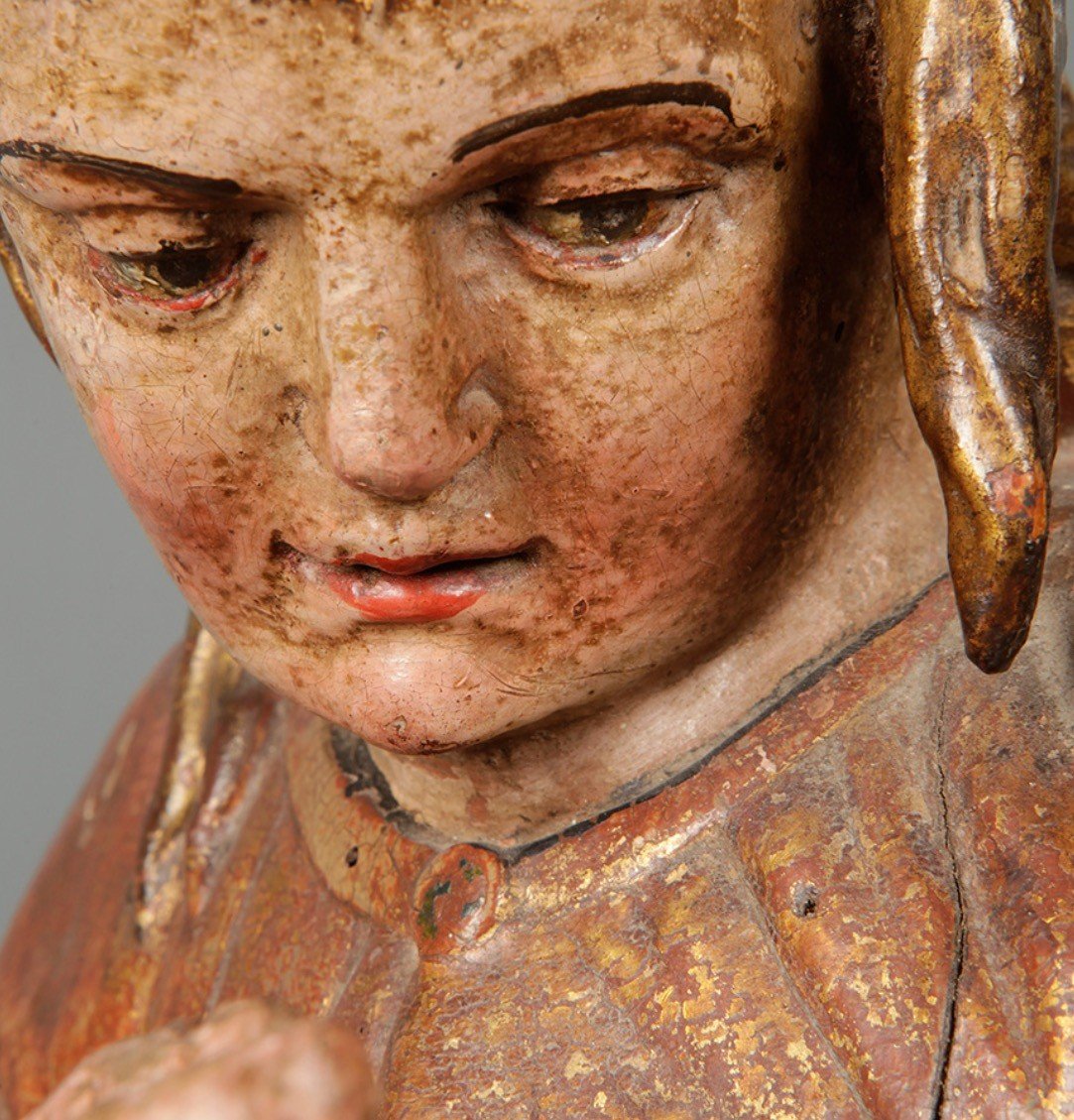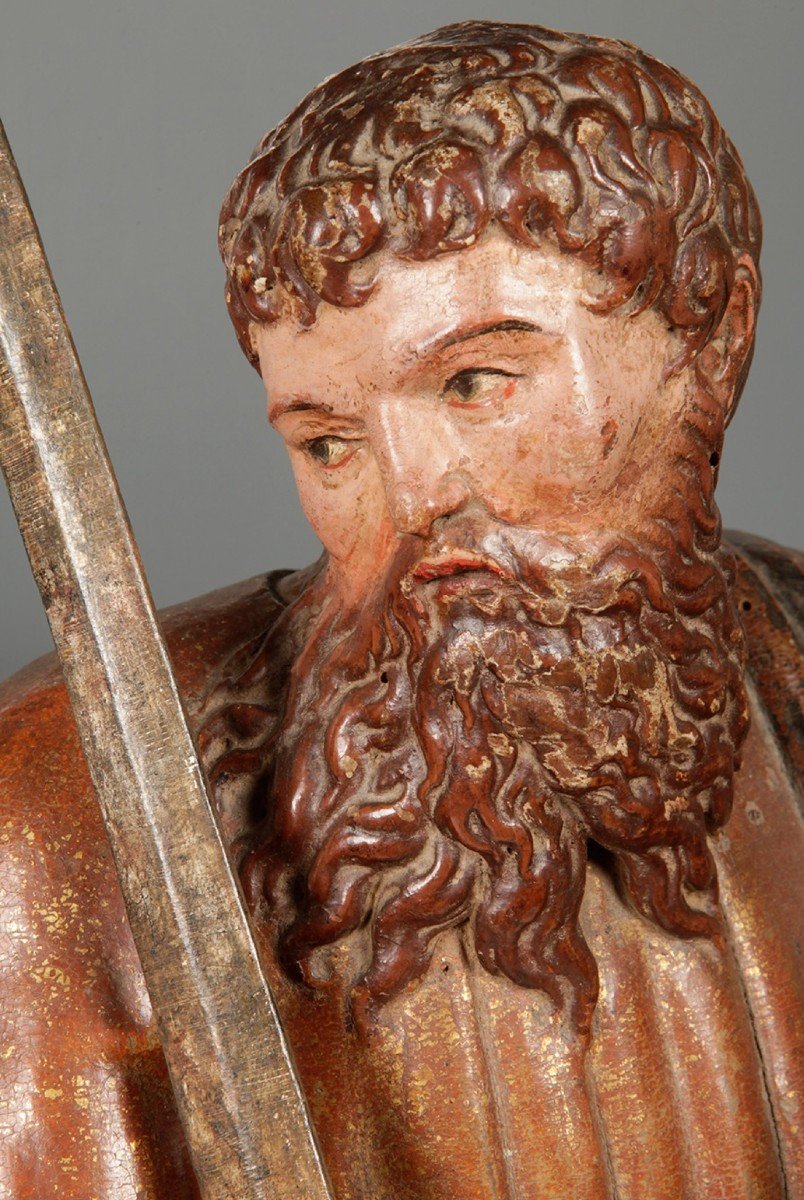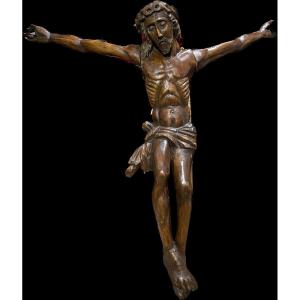The two male figures are depicted standing, with their main iconographic attributes and dressed in the timeless tunics that the era reserved for sacred persons. The younger one holds a chalice in his hand from which a serpent emerges, and an eagle at his feet; the bearded one holds a sword with a visible hilt. The first is Saint John, the tetramorphic eagle alluding to his Gospel, and the chalice to the episode in the Golden Legend of James of the Voragine, in which he recounts how the emperor Domitian tried to kill him with poisoned wine, which escaped in the form of a serpent after the evangelist blessed the cup. The second is Saint Paul, with that characteristic appearance that links him to much earlier paleochristian works and with the sword of his martyrdom, which also refers to a text in his Letter to the Ephesians. From a point of view Stylistically, the two devotional sculptures in the round show a marked influence of the Italian Renaissance in the draperies, the contrapposto, the proportions and the gestures, which distances the works from the other trend of the time, closer to the Flemish models, which preferred a greater dramaturgy. The Gothic was abandoned, as shown by the naturalness of the faces, the folds, the anatomy and the gestures, after much effort. It was first necessary to accustom the clientele to the new tastes and for the artists to learn the technical and aesthetic novelties that the arrival of the Renaissance implied, and it developed at very different times and levels depending on the regions or artists. Compare these works, for example, with the San Juan de circo by Juan Rodríguez from the Fundación Simón Díaz (a work preserved in the Museo de las Ferias in Medina del Campo, Valladolid).
Dimensions: 26x26x76 cm








































 Le Magazine de PROANTIC
Le Magazine de PROANTIC TRÉSORS Magazine
TRÉSORS Magazine Rivista Artiquariato
Rivista Artiquariato